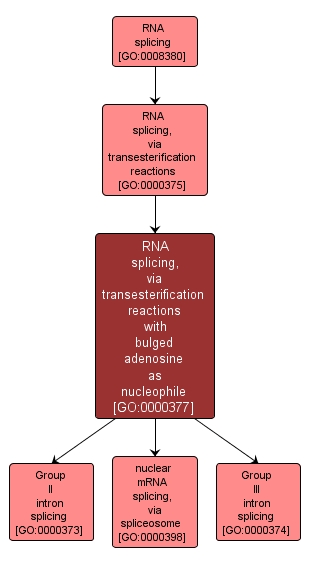GO TERM SUMMARY
|
| Name: |
RNA splicing, via transesterification reactions with bulged adenosine as nucleophile |
| Acc: |
GO:0000377 |
| Aspect: |
Biological Process |
| Desc: |
Splicing of RNA via a series of two transesterification reactions with a bulged adenosine residue from the intron branch point as the initiating nucleophile. When the initial RNA for the splicing reaction is a single molecule (cis splicing), the excised intron is released in a lariat structure. |
Synonyms:
- lariat RNA formation
- lariat RNA biosynthesis
|
|

|
INTERACTIVE GO GRAPH
|














